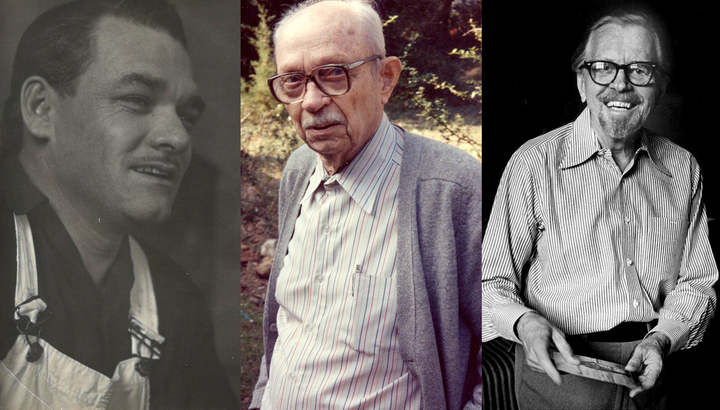The Carter Blog
Carter ARTicles
A beginners' guide to archiving family memories
Jul 12, 2023
Many families, including mine, have old pictures, papers, heirlooms, and other items that tell the stories of our history. Though these items hold precious memories and family history, they are often jumbled in boxes and pushed aside to deal with later. This is exactly the case in my family, and as the associate archivist at the Carter, I’ve recently decided to organize my family’s collection. Working as an archivist means I help make sure that the Carter’s archives are kept in an order that makes sense and helps people access them. Through my job and current project in my family, I’ve put together some helpful tips and tricks to help you begin processing your family’s collections.
The best place to start is by gathering the things you want to store and save. This may include photographs (physical or digital), family papers such as certificates, journals, books, and other items. Having these items together in one place can be overwhelming—it certainly was for our family, but it’s important to get an idea of what you’re working with. From here, there are two ways you can go about getting through the collection—preservation first, or organization first. I preferred to get the organization side out of the way first.
When it comes to organizing family collections, it may be easier at first to put everything in order by year. Having things in order from oldest to newest can help you feel as if you’re making progress and gives you a sense of control in getting an overall sense of what you have. However, you could also organize by different parts of the family or topics such as sports, vacations, school pictures, or others. You could even put some things in order by year and have others sorted by topic. In the Carter’s Artists Archives, we often sort first by topic, such as correspondence or photographs, and then by year within those topics. In the process of organizing, you may also want to separate any audio/visual materials you may have in your collection. Family movies stored on VHS tapes or CDs, albums on cassette tapes, or other similar materials, would ideally be digitized, but this will take additional resources.
After everything is organized, it’s time to get into the preservation side of things. This will give your materials the best chance of surviving for years to come. The important thing I had to continually remind myself is that doing something is better than nothing. You don’t have to get top-of-the-line archival materials to store your collection; there are other options available. For my family materials, we decided to move everything into acid-free folders, the same ones we use at the Carter, to be organized in plastic bins so they would be easy to store and access. For the plastic bins, we worked to find options that have either a 5 or ‘PP’ in the recycle-code triangle on the bottom. These are made of polypropylene, which is safer for storing materials long term, though you can also purchase archival boxes made of corrugated or barrier board, which is what we use for our Museum collections. For even more protection, at the Carter we use polypropylene or mylar sleeves to store photographs and papers, which are then organized using acid-free folders.
Possibly the most important part of this process is deciding where to store everything. Attics, basements, storage sheds, and other places that aren’t climate controlled or are vulnerable to weather events can cause your materials to break down faster than they normally would. The storage areas at the Museum have compact shelving and climate monitors to make sure our collections are stored at the right temperature and humidity levels (the goal is between 65 to 70 degrees Fahrenheit and 30 to 60 percent humidity for papers and photographs). While that is easier to accomplish in a museum setting, a cool, dark place in your home, such as a cabinet or closet, will work for your collections.
Additionally, you could choose to start scanning some of these materials to store them digitally in case something happens to the physical copies. When digitizing, the easiest solution to use at home is to scan the items and save them as either TIFF or PDF/A files. PDF/A files are designed with preservation in mind, as opposed to the more common PDF files, and can be saved using either Adobe Acrobat, a word processor, or an online converter. Other file types, such as .img or .jpg, can be used but they are not ideal and could lead to loss of information. Once you have scans of the items, try to store them on both a computer and an external device of some kind, whether an online cloud-based storage or a USB drive. Make sure to check these digital files regularly to ensure they can still be opened and do not corrupt over time.
When it comes to archiving, there are a variety of resources available online offering advice, but most come down to the same idea: Doing something is better than nothing when it comes to your family history and collectibles. Even if it is a slow process or all you’re able to do is change where they are stored, doing something will still help ensure that your family memories last longer.
Additional Resources





